The spectrum of self-expression goes into depths like nothing before. From physical characteristics to the things we cannot see; identity is one of those complex properties that highlights the human experience. How we choose to showcase our masks can be in different forms. For the visionary, the self can be said, through wet paint and infused colours.
We caught up with four gifted artists (split into two parts), who express both their ancestry and modern history through traditional mediums that is the paintbrush.
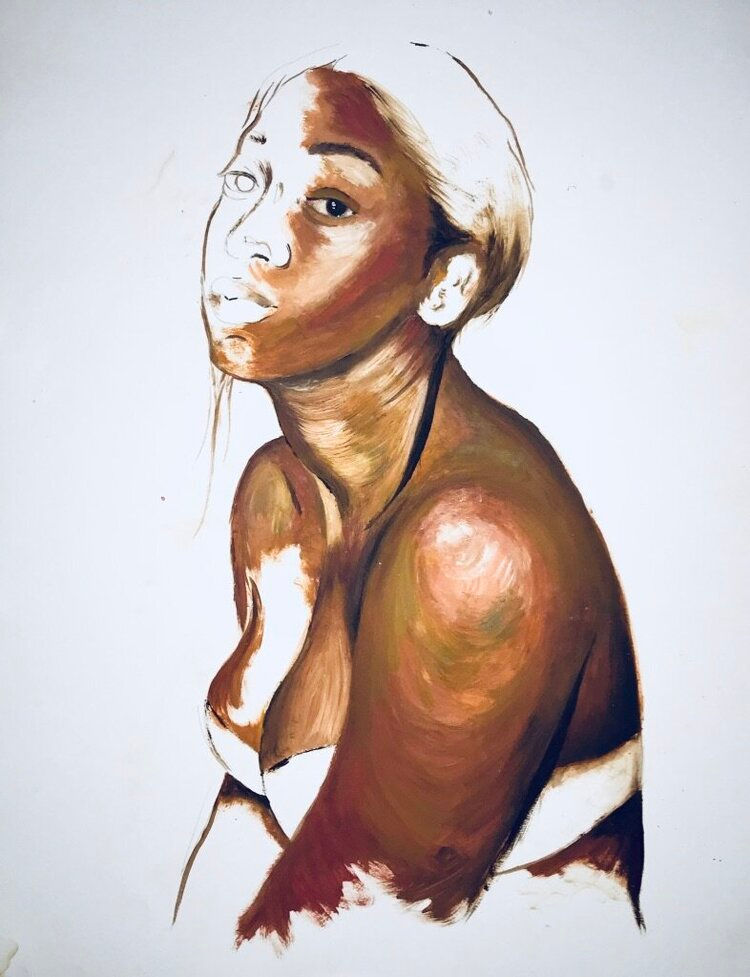
GABRIELLE OKE: THE ONE WHO FOLLOWED HER HEART
Gabrielle Oke knew art was where her heart was, despite the uncertainty of where it could take her. Her thirst for the arts, theatre and film, was always apparent; even when people that looked like her couldn’t be found on display.
“When I was a confused tween, I binged on That’s So Raven. If I was hurt, I painted. If it was my birthday, my family would take me to the theatre. When I lost someone, I painted. They had always come way easier to me and it was always an option if I allowed it to be” she says.
After completing her undergrad and entering the corporate world of advertising, she quickly felt out of place. “I gave up the cushy salary, and went to drama school to get my MA in Acting. So now I’m a full time artist and an actor (go big or go home). It’s solitary, its uncertain, the rejection is A LOT and it keeps me up at night… but I want to do it everyday - that’s got to be love right?”
“I want to do it everyday - that's got to be love right?"
Are there any artists’ whose work inspired or influenced your work?
I’m following the journeys of some amazing artists that inspire me in various ways; ways that don’t always translate visually in my work. For example, Nneka Jones (@ArtYouHungry) is doing some insane hand sewn portraits right now and it’s blowing my mind the level of patience that would be required for work like that. Kehindle Wiley (@kehindewiley) and Nigerian artist Jimoh Buraimoh’s work have a similar effect on me with the scale and detail of their work. These artists remind me of the importance of storytelling through art — from condoms and bullseyes on the portrait, to the intricate beading and large scale renaissance like illustrations of black men on horses; it’s not just nice to look at, there’s a message, a question, levels of depth that make you want to pick the mind of the artist.
But my all time favourite right now is Actor & Artist Joseph Lee. I’ve been following him for years and it’s an amazing journey to witness. He’s constantly exploring which I think is an important trait as an artist. A trait that I would like to embrace further because it’s not about getting it right but getting it true. I want to drop the fixation and like Lee, explore the different elements of what I’m investigating. The way he arrived at his style really reminds me of Pablo Picasso. He's clearly a talented figurative artist yet along the way, in this exploration of identity, he's essentially left the standard forms of the face behind and found a way to communicate the subjects humanity. As someone who thinks the details in a face say so much and that eyes are like “a window to the soul”, seeing a portrait with no eyes or in Picasso’s case, an eye where a mouth should be and still feeling something is like “WOW” — we’re so much more than faces and bodies. I feel like capturing the essence of a person in paint like this is what makes work timeless and therefore the ultimate goal for me.
What's the general process you go through when creating a new piece?
I always ask myself “Why?" before I start any painting. Oil paints are expensive — why am I immortalising this person, thing or feeling through the medium of paint? What is the subject saying and what do I want to use them to say?
The series I’m working on now is based on iconic individuals, inspiring figures from the B.A.M.E. community. It’s a lot about what that person said/did that stuck with me. How they succeeded and excelled in spaces where they weren’t necessarily welcomed in. That's where the series name “Iconoclast” came from. But it’s also about remembering them and hopefully serves as a reminder of the spaces we have entered and changed for the better, as well as a reminder that we have so much to offer to the world.
Then it’s about the colours that I think complement that individual and how they come across to me. I get a lot of warmth when I read the words of Maya Angelou, when I hear her voice and I think that was reflected in the colours I chose to paint her in. Michael Jordan is such a bold character and changed the face of the NBA so the red of the Chicago Bulls was a must.
When actually embarking on the painting, I read a lot about them. I listen to their music or their voice, watch the documentaries when I’m not painting — just general emersion in that person and the time they lived in. I want to understand or at the very least, I want some insight on the why and how they became the person I’m painting. I think that’s just important for me I don’t know if that actually affects the painting. In general I consume a lot of music whilst painting which is why the WE ARE SOUL playlists mean so much to me! I need a solid musical soundscape to paint.

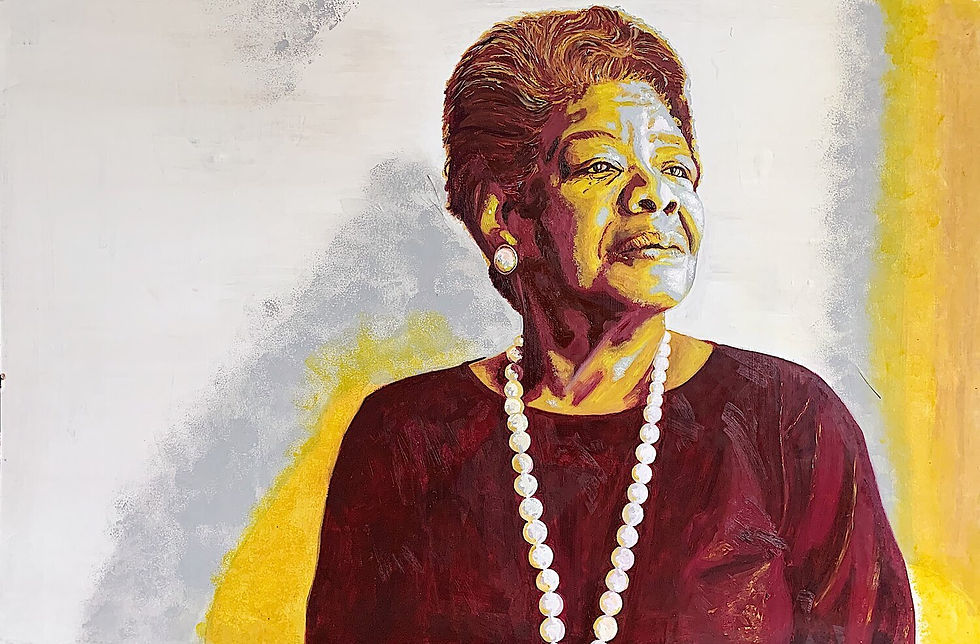
Art is a form of expression that has been recognised for centuries, what do you think it would look like 50 years from now?
I think art will continue to be an essential vessel for capturing history. With the climate we’re currently living in politically, socially, religiously etc. I think it will be increasingly difficult for artists to create without reference to the world we live in and they way we interact with one another. So much is going on and artists have always been key historical visual storytellers so I think we’ll see a lot of Ai Weiwei type artists popping up and photographers like Platon Antoniou creating works like ‘The People’s Portfolio’.
Every art movement says something important but I think generally speaking, we’ll move from Neo-Romantic & Surrealist forms of art and deeper into Social Realism and Excessivism as everyone attempts to compute and communicate how they feel about all that goes on. But I also see art looking a lot more diverse, a celebration of differences, depicting places and people of colour as subjects of beauty in the foreground rather than merely subjects and places of suffering. As much as art captures and catalogues what is going on now, it can also reveal the unseen & unknown; depict where we are going and where we want to be. I’m excited to find out what that looks like.
Your recent work showcases ‘Black Heroes’ of today. Why do you believe it's important to use art to showcase these Black Heroes? What impact does it have in the art industry?
My younger sister was telling me many of her classmates born in 2000 didn’t share in the loss she felt when Michael Jackson passed simply because they didn’t really know who he was and how he brought us so much joy whilst shaping music and dance. That was so wild to me! So what about Fela Kuti & Nat King Cole? Jean-Michel Basquiat? Toni Morrison? Kwame Nkrumah? Bruce Lee even! Is there 1 follower on IG who doesn’t know what this person did for us as a people — probably. I feel the need to educate myself and remind us all, myself included.
It's important for me to use art because that’s what I know and how I communicate. But it need not be through art the way I know it and Iddis Sandu is a perfect example of that. It’s so important that we don’t forget the works of these great people and I want us all to apply that inwards somehow and in turn realise the greatness that lies within us. Whether they touched a canvas or not, these people created change and made an impact; that’s art to me. I don’t know how it may affect the art industry, nor am I really concerned about that. For me, art is for the people not the “art world”. Showcasing these black heroes is less of a concern for how it will affect the art industry and more so how it will affect us on an individual basis. We’re all effectors of change. If they can do it then so can we.
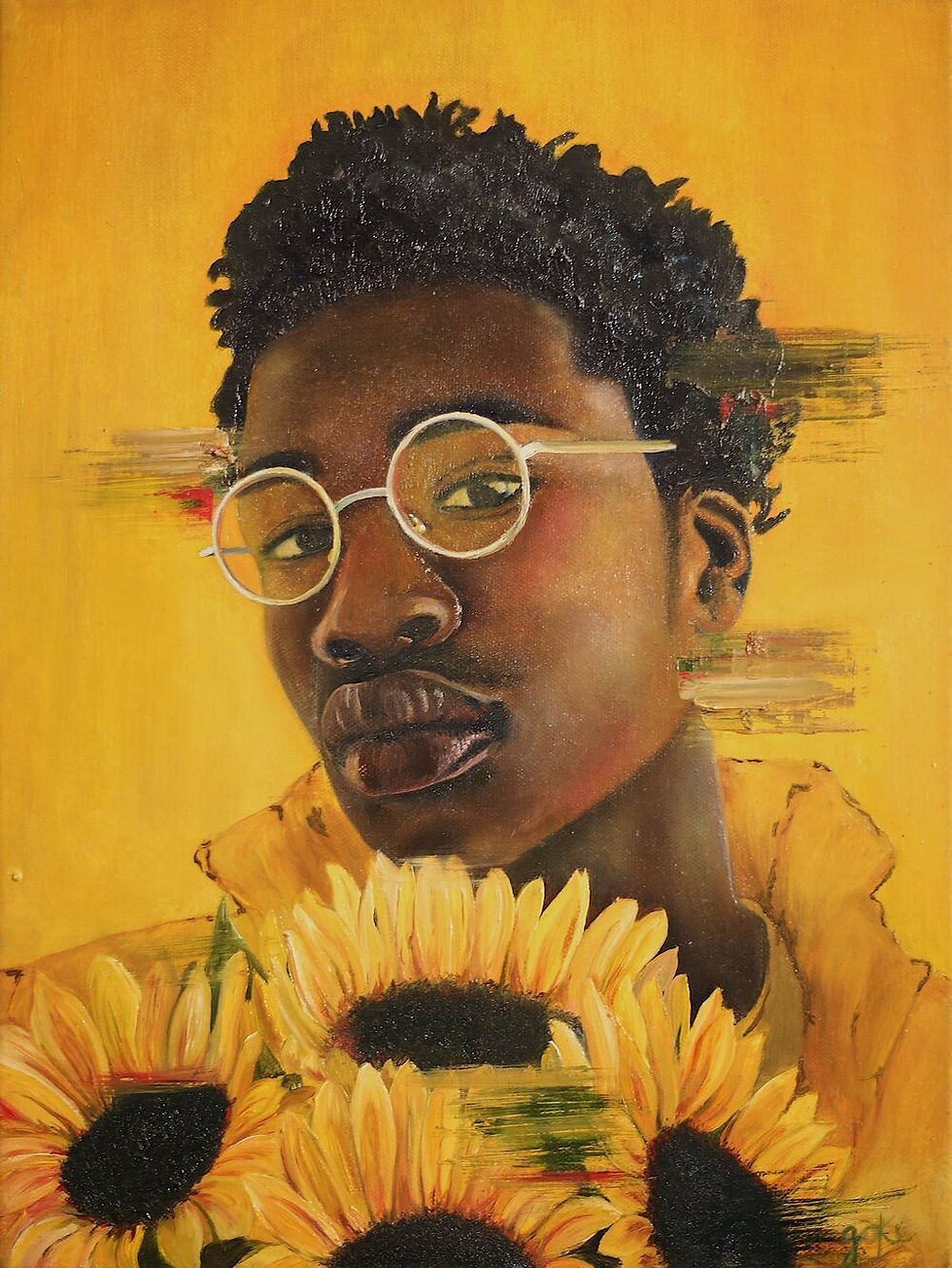
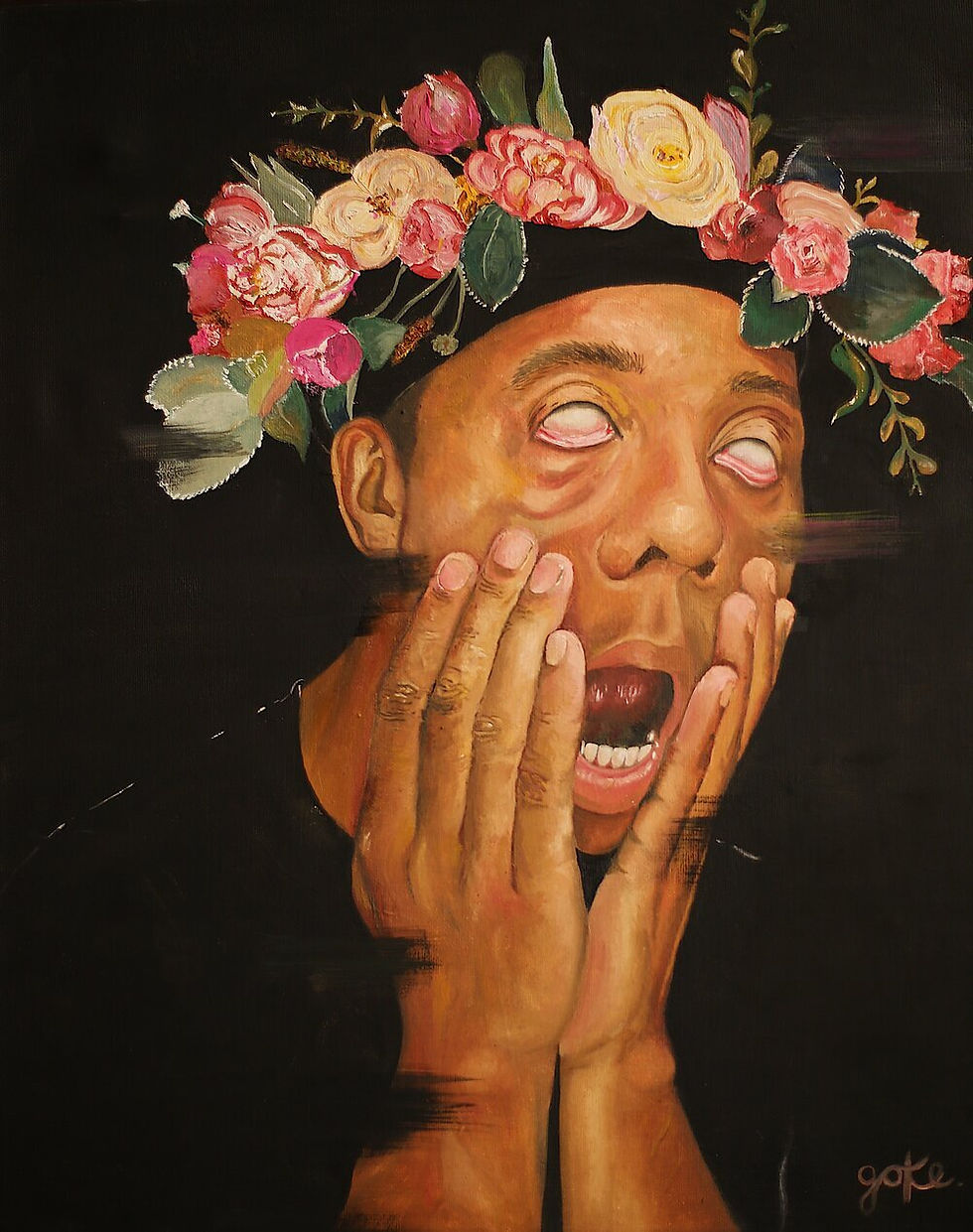
GATIEN ENGO: THE ONE WHO SAW SELF IN OTHERS
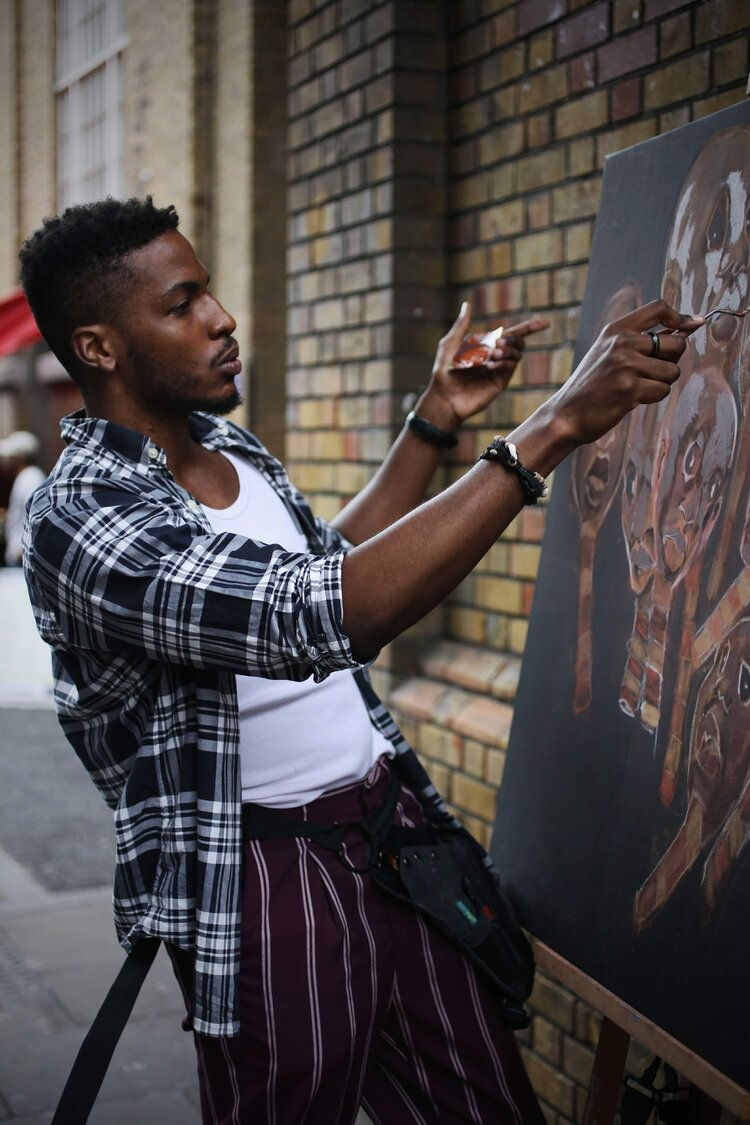
For Gatien Engo, he stumbled upon art through a lens of curiosity — when it came to making sense of
self. If his pieces aren’t loud about it, his socials certainly are as Gatien celebrates his African heritage as boldly as he can.
"I'm still amazed by the African art that's survived post-colonisation, somehow. I love that you can still find little pieces of them in the world somewhere".
How did you get into your art and what kind of art do you specialise in?
I got into art when I was really young, like 6 or 8. I started writing stories first — back in France where I was trying to find my identity. So, I would imagine Africa being a jungle where there were lots of animals [laughs] because that’s all we really knew about it. But, after learning more from my parents, that’s when I started to develop my art based on who I was. I’m still amazed by the African art that’s survived post-colonisation, somehow. I love that you can still find little pieces of them in the world somewhere. What I want to do with my art is to gather all those little elements, and make something new that would actually bring something new from it. That’s kind of my philosophy.
In terms of the kind of art that I do and mediums; it’s mostly acrylics and a canvas. I try to have a performance style while I paint too. So I’ll paint outside usually, put some music on and vibe while painting.
What do you love the most about your work?
The use of the African Mask and fitting them into today’s environments. That’s the part I love the most.
There isn’t a specific mask style I stick to. I pretty much just mix them up, depending on “beauty purposes” [laughs] or sometimes based on that mask itself. I can sometimes paint and then it will be 3 or 5 months after that I will find the meaning of the painting since I’m not really aware of what I’m doing there and then. It’s after some time that I realise I did this stroke because of this or that, you know? That’s when I go into my work with a little more inspection.


Who are the most inspiring people you have connected with during your journey so far?
To be fair, it’s usually the people that I meet on the street. The good thing about the street is that I meet a lot of different people and their stories really inspire me. For example, the owner of the Dark Sugar shop, she’s a really brave woman and I know a little bit of her story. I’ve come across a jeweller who approached me while I was painting. He had a collection of rings, African rings specifically — they were really simple and beautiful. He offered me one of his rings and asked if he could take a picture of my hands while I painted with the rings on. After that he gifted them to me. I remember feeling really good about it because there was a sense of community that we sometimes disregard.
In terms of the art field, like the big artists like Jean Michel Basquiat — even though I don’t truly resonate with his lifestyle [laughs]. I’m a fan of Picasso as well.

How do you present your art? Inwardly (self-expression, your surroundings)? or outwardly (the world, political events, modern history/news)? Why?
I still don’t know how to present my art. Even as we’re speaking right now, it’s actually really hard to describe my work. But I think it’s because I don’t want to put myself in a box. I think we [artists] should do both.
Last year you had your first debut solo exhibition in London, how was the experience? Where else would you like your art to take you, globally?
The experience was amazing. I did it in a local restaurant that’s in the corner of Brick Lane which specialises in Caribbean food. I know the owner personally so it wasn’t too difficult to get the space.It’s where I met the owner of the dark sugar shop there too. It was a great HUMAN experience from the start. A lot of people came which was a nice surprise. I was pretty happy about that.
The way I see my art going forward, I’m working on a way to carry less, because it’s quite heavy. I used to carry my easel along along with my canvas [laughs] and headphones. Right now I’m working with a roll which I use as a canvas so I can continue painting outside in different areas. I want to keep seeing and meeting new people. That’s where I see my art going. I want to produce more videos of me making these pieces too. Because it’s actually a performance, I’m actually dancing. It’s more than just painting on the street. Usually, I paint to Fela Kuti or James Brown’s music because of the energy those guys provide — you can’t stay still, you’re always happy. It goes on and on and it’s just perfect for “the performance”. I want to venture out to Brixton, Peckham, North and a bit of East too.
To find out more about Gabrielle Oke and Gatien Engo check out their socials to stay up to date with their current and upcoming projects.
Komentar